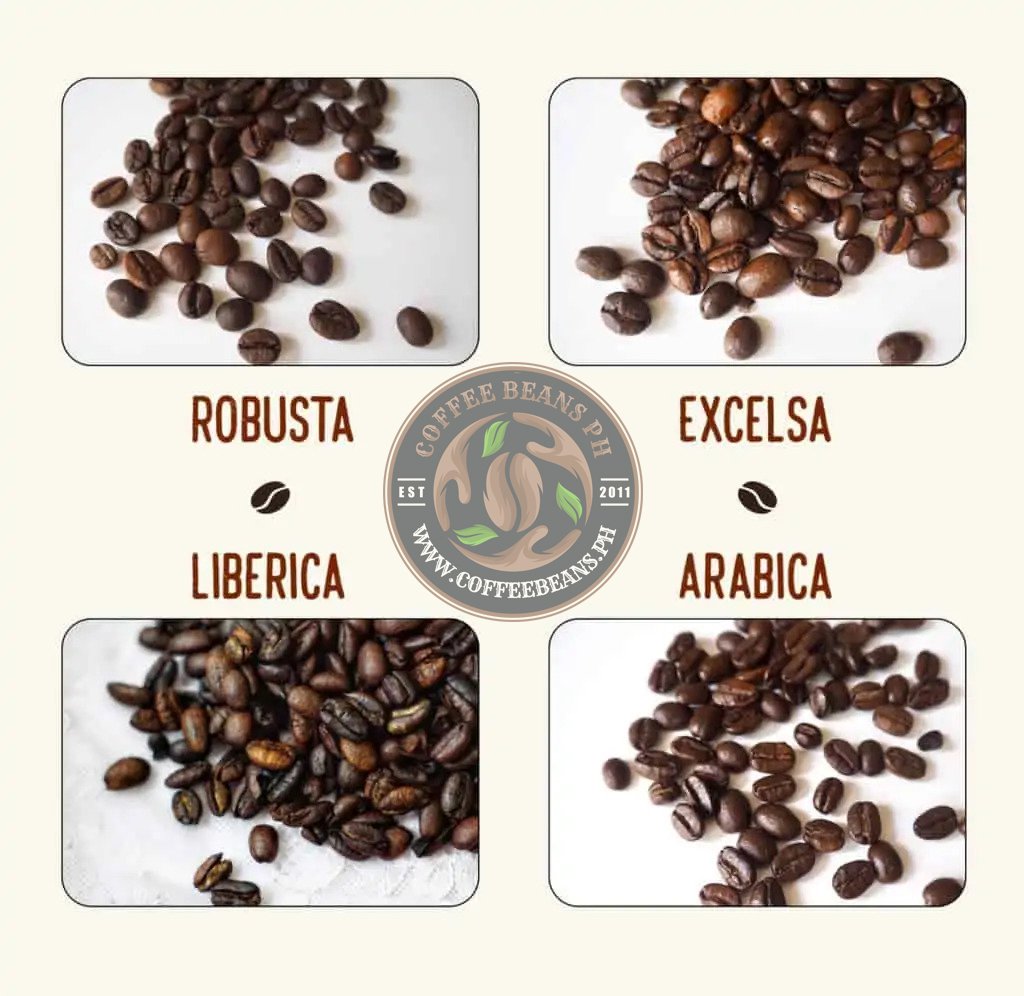
Many coffee drinkers often take the coffee beans they drink for granted. How familiar are you with Arabica, Liberica, Excelsa, and Robusta beans? Would you be able to distinguish between the four? Let’s help you out with that.
Arabica coffee beans (Coffea arabica) were first discovered in the southwestern highland forest of Ethiopia; about 400,000 ha. of an ancient forest with underlying traces of coffee still survives. From Ethiopia, it made its way to Yemen, the Middle East, and India via Persian invaders and 13th-century Arab traders. European traders in subsequent centuries brought Arabica coffee seeds to parts of Asia, Africa, and South America.
Arabica trees need elevations of at least 200 MASL and cool temperatures averaging 15-24°C (59-75°F) to grow optimally. They usually grow up to heights of 5 meters, although farmers will raise them to 2-3 meters tall to make harvesting easier. They take up to 7 years to fully mature, producing beans with complex aromas and flavors hinting at sugar, caramel, chocolate, and berry.
Robusta
Just like Arabica, Robusta (Coffee canephora or Coffea robusta) originates from Central Africa and the sub-Saharan areas in Western Africa. The Robusta bean was only recognized and classified by agriculturists at the end of the 19th century. Robusta coffee is a hardy bean that can grow in the lowlands and is much more pest- and disease-resistant. Today its largest producers reside in Africa and Southeast Asia; Vietnam is the world’s top Robusta producer.
Robusta grows as small shrubs, though they can shoot up to 10 meters and will mature in cycles of 11 months. Most of the world’s production of Robusta today is geared toward producing instant soluble coffee. Inferior quality roasts of Robusta can have a bitter, rubbery taste. Roasted correctly, it has smooth, mellow flowers with plenty of chocolate and a mild peanut aftertaste.
Liberica
Coffee liberica is the world’s rarest species of coffee, comprising only 1, maybe less than 2 percent, of all coffee produced worldwide. It originates from western African countries like Liberia, Angola, Uganda, and other parts of Central Africa. It has become naturalized in southeast Asia countries like the Philippines, Malaysia, and Indonesia, where it is more actively cultivated than anywhere else.
Liberica trees grow to much bigger sizes than Arabica, with average heights of 9-20 meters, adding to the challenge of cultivating them. Liberica trees produce large coffee berries with floral and fruity aromas. However, when roasted, Liberica beans transform into coffee with deep, earthy, woodsy flavors, which are also accentuated by how you brew them.
Excelsa
Excelsa (Coffee Excelsa) was, until recently, its coffee species. However, it has been recently reclassified as a sub-species of the Liberica bean. Agronomists have disputed this classification, although its trees and beans resemble the Liberica plant.
It is rare to find any coffee specialty vendor offering single-origin Excelsa. This coffee bean often becomes part of a coffee blend, usually with Robusta and Arabica. Its flavors are tart and fruity, just like Liberica before it roasted.
I hope you enjoyed this quick lesson!
When shopping for coffee, ask your seller what’s in their coffee blends. It might turn into a very informative conversation.




